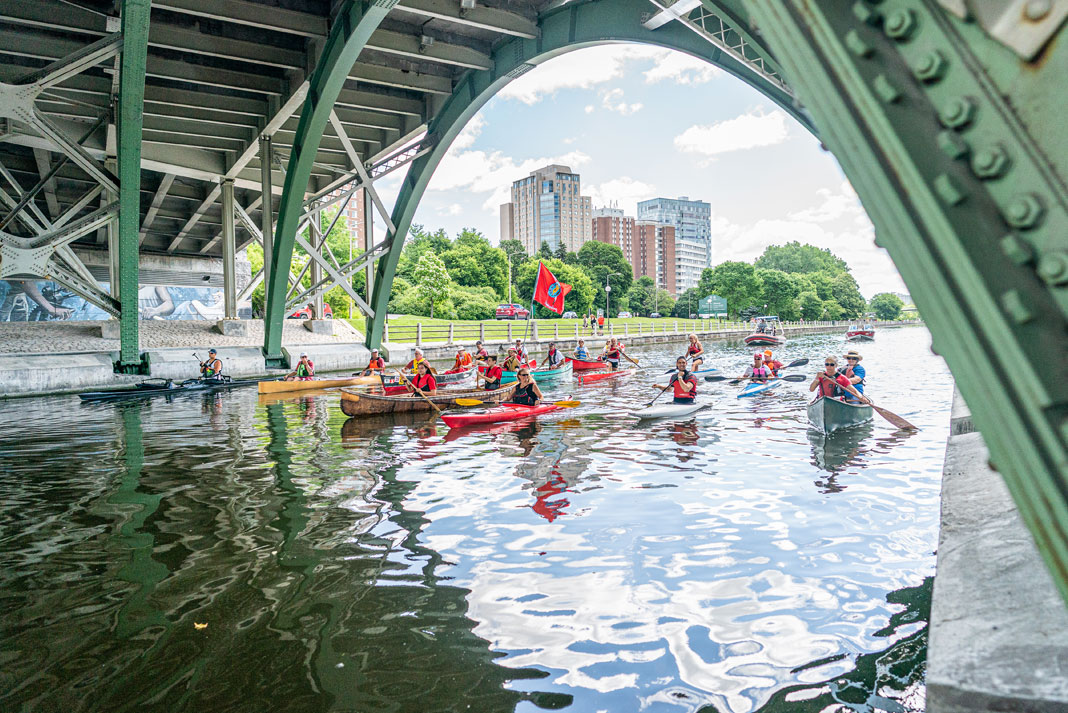When I first started canoeing, I took lessons with a single blade, learning the various strokes, purpose and times to execute. Most of my paddling was in a tandem, with a partner, so we took lessons on working together. One of the things that was covered was also fitting the paddle to the user, it was considered to be a very important part of the process, there was an initial fit, then some room to tweak as we all aren't the same.
When I started soloing I again revisited strokes and did more practicing, to again make things work together and again tweaked the single paddle fit for purpose.
When I decided to try twin paddles, I took instruction and did a lot of research into strokes, paddles design and what sort of canoe they were best suited too. Then I went out fitted a paddle to my needs and practiced to become proficient with the new tool. I will admit I tweaked the design on subsequent paddles to better fit my style.
Contrary to what some folks believe, the double paddle is not the devils work, it is just a tool, good for some things, better for some things and not good for some things. The one thing that is constant between the two paddle types is that they require knowledge, skill and practice to use effectively.
This is exactly true of the single blade as well, it is a tool ... good for some things, better for some things and not good for some things, it is equally lackluster in the hands of some one with out the skill and knowledge to wield it effectively.
I suspect that the majority of folks commenting here have taken some instruction on the various aspects of using single blade paddles, the strokes, how to fit for use, blade shapes etc and have put in the work to be reasonably proficient.
What I wonder, is for those commenting negatively about the double blades, how many have taken instruction, fitted the paddle and put in the work to be proficient? And how many just decided to try a double blade, with little prep, and got disappointed? There are no short cuts, both blades need the work to be put in to be effective.
Back to the original question, Blukanu .... the double is not a magic wand ... it is simply a paddling tool you will need to learn how to use. The better you fit it to your purpose and learn how and when to use it, the more useful it will be.
I can and do use both types and believe I am reasonably proficient with both. I do not get wet, I do not sprint, I do not fatigue unduly with either. I do find the twin better for a narrow solo craft (think 26" at waterline or less) for eating up the kilometers, at a steady pace and for traveling in heavy weather. I find for landing, streams and fishing, I prefer a single blade as I think you can finesse the canoe better/easier.
Brian
When I started soloing I again revisited strokes and did more practicing, to again make things work together and again tweaked the single paddle fit for purpose.
When I decided to try twin paddles, I took instruction and did a lot of research into strokes, paddles design and what sort of canoe they were best suited too. Then I went out fitted a paddle to my needs and practiced to become proficient with the new tool. I will admit I tweaked the design on subsequent paddles to better fit my style.
Contrary to what some folks believe, the double paddle is not the devils work, it is just a tool, good for some things, better for some things and not good for some things. The one thing that is constant between the two paddle types is that they require knowledge, skill and practice to use effectively.
This is exactly true of the single blade as well, it is a tool ... good for some things, better for some things and not good for some things, it is equally lackluster in the hands of some one with out the skill and knowledge to wield it effectively.
I suspect that the majority of folks commenting here have taken some instruction on the various aspects of using single blade paddles, the strokes, how to fit for use, blade shapes etc and have put in the work to be reasonably proficient.
What I wonder, is for those commenting negatively about the double blades, how many have taken instruction, fitted the paddle and put in the work to be proficient? And how many just decided to try a double blade, with little prep, and got disappointed? There are no short cuts, both blades need the work to be put in to be effective.
Back to the original question, Blukanu .... the double is not a magic wand ... it is simply a paddling tool you will need to learn how to use. The better you fit it to your purpose and learn how and when to use it, the more useful it will be.
I can and do use both types and believe I am reasonably proficient with both. I do not get wet, I do not sprint, I do not fatigue unduly with either. I do find the twin better for a narrow solo craft (think 26" at waterline or less) for eating up the kilometers, at a steady pace and for traveling in heavy weather. I find for landing, streams and fishing, I prefer a single blade as I think you can finesse the canoe better/easier.
Brian


